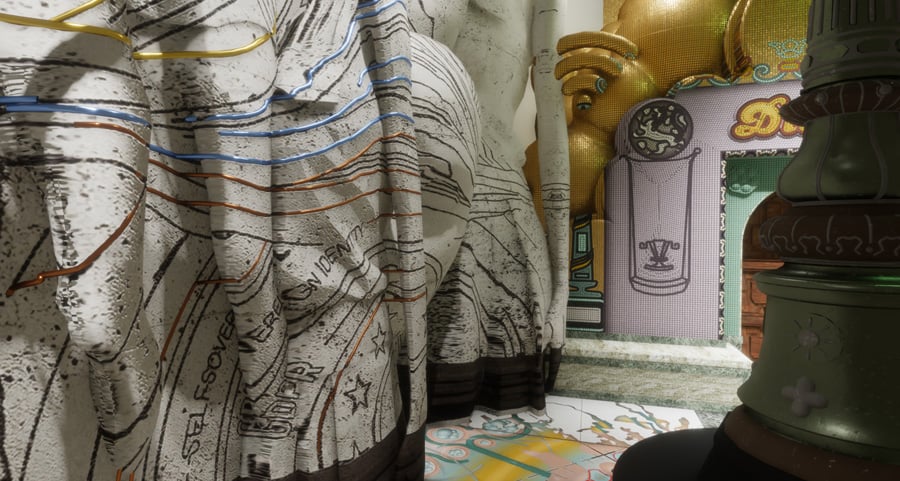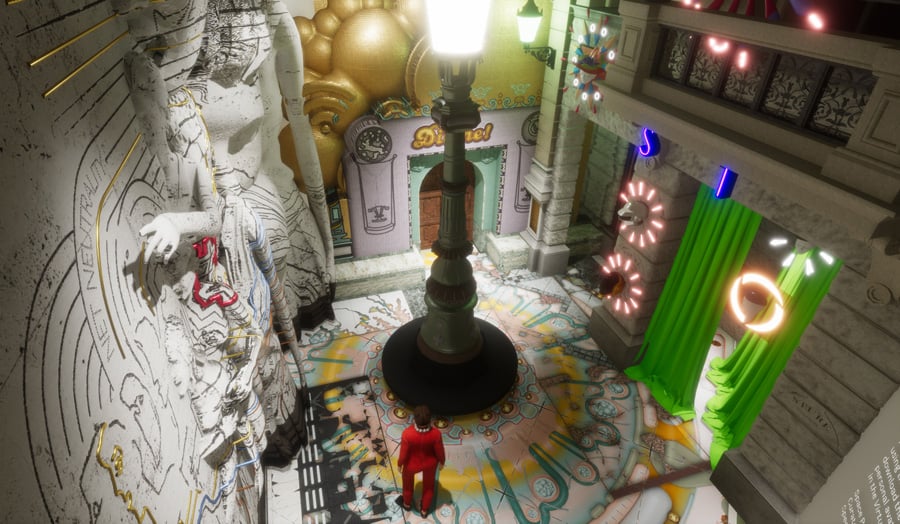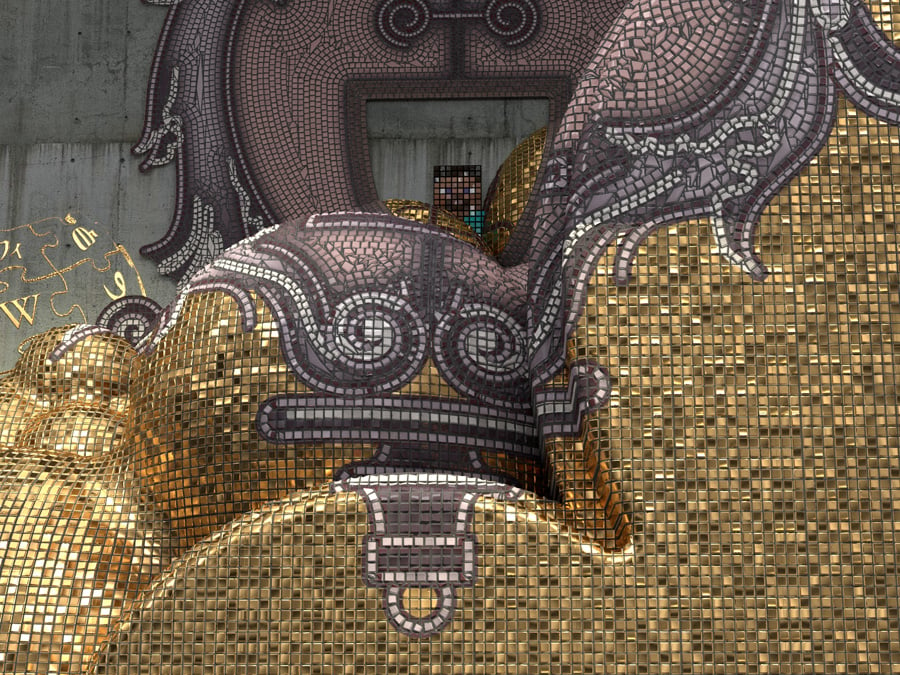
November 19, 2018
This Kaleidoscopic Exhibition Explores How Augmented Reality Will Alter Buildings, IRL and via URL
Shown at Stockholm’s ArkDes this fall and now available online, Value in the Virtual explores how our everyday experiences of the built environment will be changed through virtual and augmented reality.

What does it mean for a place to exist in the digital age? A growing expanse of virtual environments mapped onto physical spaces means that our cities are increasingly existing through multiple planes—through Google Street Views and Instagram geotags and Sansar hangout spaces. Through these, the built environment is adapted, augmented, and fragmented: A virtual environment mapped onto the dimensions of Times Square might evolve into a flourishing public space through a virtual reality (VR) platform. Or it might be abandoned, left unchanged for years leaving looping ads for long lost McDonald’s meal deals for adrift avatars.
Architects are beginning to take these possibilities seriously. As builders of space and the spatial systems through which we live our lives, designers are, as ever, uniquely positioned to have an active role in how VR and augmented reality (AR) technologies might shape our quotidian lives. Which is just what Value in the Virtual at ArkDes, Sweden’s national museum for architecture and design, sought to explore.
The exhibition’s physical manifestation actually just ended yesterday. But the exhibition continues beyond ArkDes, Stockholm, and Sweden. In fact, you can visit it right now.
“Value in the Virtual is not a virtual reality exhibition, but an exhibition about virtual reality,” explains curator and Metropolis contributor James Taylor-Foster, who worked closely with London-based architecture studio Space Popular to produce the exhibition, the first in the museum’s new Boxen space.
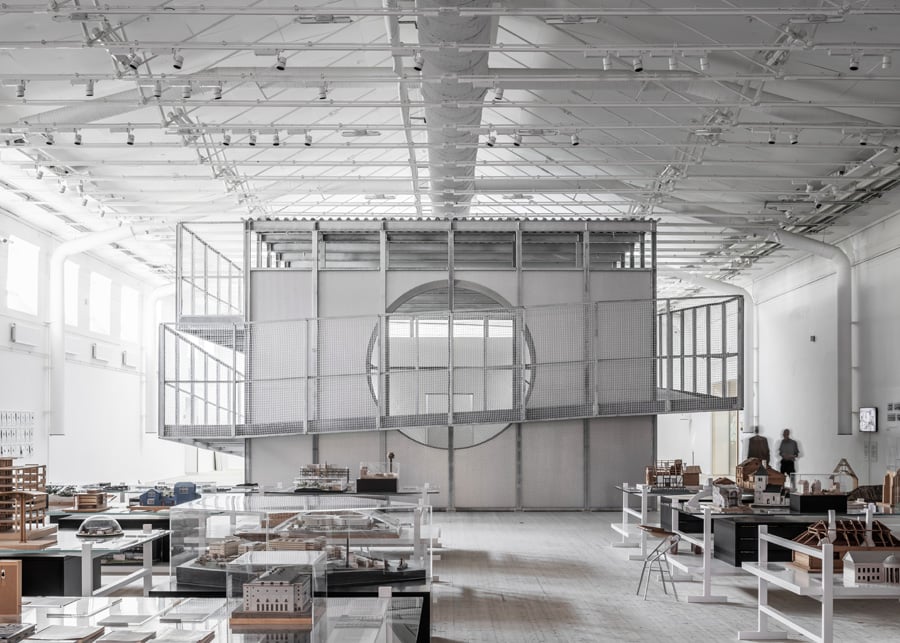
Boxen, designed by young Swedish practice Dehlin Brattgård, is designed to host small, short term exhibitions which can serve as provocations or statements for unestablished architects, artists, and curators who aren’t yet ready to fill ArkDes’ other more cavernous spaces. Value in the Virtual is a bold inaugural offering that probes into the uses of VR technology in contemporary art, architecture, and even quotidian life.
In its simplest terms the exhibition inside Boxen consisted of ten 18-foot canvases tilted 45 degrees away from Boxen’s white walls, all atop a room-size rug replete with symbols and patterns that referenced everything from cartography to palatial floor tiles fragmented with cracks and glitches. The canvases are mural-like depictions of surfaces across Stockholm that have been recreated inside video game software, digitally augmented, and then printed. For example, one shows the Blue Gate, the wrought iron entranceway to the Royal National City Park where Swedish monarchs once hunted for deer. Another replicates the legendary wall art of artist Siri Dekert inside the Östermalmstorg metro station, completed in 1965, which features feminist and other revolutionary slogans carved into its concrete walls.
Yet in both cases something is a little off. Beside the gate, thin squiggles of gold seem to echo out from the deer statues while some of Dekert’s line work has been traced over with a metallic sheen and new slogans—“NET NEUTRALITY” and “METOO”—appear alongside Derket’s “SIMONE DE BEAUVOIR” and “HYPATIA.” Rather than simply redo familiar spaces in Rhino, the canvas prints at Value in the Virtual hint towards the role that VR and augmented reality (AR) might play in our experience of “real” spaces.
Of course, these adaptations take on a new intensity when one dons the VR-headset placed in the center of the exhibition space. The viewer finds themselves in the same space—Dekert’s artwork is there, as is a corner of the Stureplan square in central Stockholm—but the surfaces have burst out of their two-dimensional restrictions. The figures in the wall art bulge out of the concrete surface and the head of a statue floats above a shop doorway surrounded by symbols borrowed from The Sims and other video games.
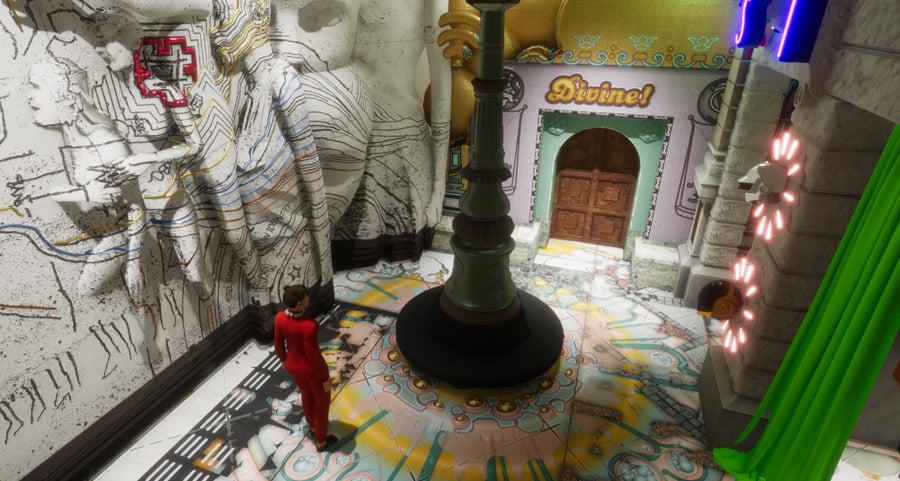
Despite the radical complexity of the images glimpsed in the VR layer of Value in the Virtual—typical, as they are, of Space Popular’s polychromatic and culturally kaleidoscopic work—there is restraint in the use of VR inside Boxen. The headset is fixed to a point (it appears as a virtual lamppost) and the scenes are still, thus restricting the viewer to a limited exploration. This is a smart, deliberate move to focus attention away from the experience of the virtual environment itself and towards VR as a tool through which to think about the future of the built environment. Space Popular is interested in provoking discussion on the interaction between these two realms as opposed to just creating a cool new world glimpsed through a headset (although it is indeed cool).
“What we’ve done here is essentially speak about surface,” explains Taylor-Foster. “The argument is that the first thing to transfer between a physical architecture and a virtual architecture is that of surface.”
As VR becomes increasingly prevalent in uses beyond gaming and niche social networks, the surfaces of our quotidian lives will likely become augmented in the ways similar to Space Popular’s experiments inside Boxen. Artworks will evolve and a building’s facade will likely never appear the same twice.
What will it mean for public spaces to exist on physical and virtual planes? How does a public space change when it can be occupied by individuals IRL and via URL? Value in the Virtual is the first step in bringing these questions and others to a broader, more serious debate within the world of architecture and beyond—where previously it has appeared as gimmicky or a fad.
And the same goes for Value in the Virtual. The exhibition is closed at ArkDes but it continues on Sansar, a social virtual reality platform, where it will remain indefinitely. From here the exhibition can be viewed (you don’t need a headset, but you do need a PC) and it will evolve over time as Space Popular’s work on VR and architecture continues. If their predictions are anything to go by, this may be a first glimpse into the cities of our future.
You might also like, “Disrupting Reality: How VR Is Changing Architecture’s Present and Future.”
Recent Viewpoints
Viewpoints
Sustainability News Updates for Q2 2025




